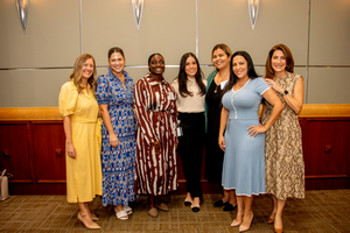News — New diagnostic technology at the (ASAC) could help clinicians to more quickly and easily diagnose autism in young children, enabling toddlers to receive therapeutic services sooner.
ASAC, part of the at the , recently invested in the , an FDA-authorized tool designed to aid clinicians in early and efficient autism diagnosis and assessment. The EarliPoint Evaluation tracks the eye movements of young children, which is a clinically-validated biomarker-based tool for assessing whether a child is neurodivergent. The new technology is more time-efficient than traditional diagnostic methods, which may lead to shorter wait times for patients at ASAC, one of the few clinics of its type in South Florida.
, a clinical assistant professor of psychology and pediatrics and co-director of ASAC, is optimistic about the benefits of the EarliPoint Evaluation.
“We are beginning to use it as an additional component in our comprehensive evaluation,” she said. “Because we are measuring social behavior to diagnose autism, and there oftentimes isn’t data we can show parents to help them conceptualize how their child may be learning and experiencing the world differently, it is very powerful for them to see a visual representation of the data created by EarliPoint.”

The ASAC team. Photo: Vanessa Castaneda
During the assessment, children between the ages of 16 to 30 months old watch 12 minutes of videos of other kids socializing on a portable tablet. The technology tracks whether the child taking the assessment is focused on objects in the environment—which could indicate that the child is at risk for autism spectrum disorder—instead of focusing on the other children.
Parladé also believes that using the technology is advantageous because it may reduce cultural biases in the diagnostic process. “Miami is very diverse, so we get clients from all different socioeconomic, racial, and linguistic backgrounds,” she explained. “Measuring eye tracking doesn’t require any specific language for the child to speak to capture the data, so it can potentially reduce the biases we might see in traditional data collection methods.”
Improving the lives of patients and their families is at the center of ASAC’s work. “We strive for patients and their parents to leave our clinic feeling hopeful and empowered by the information and support we can provide them,” stated Parladé.
, a clinical professor of psychology and pediatrics and executive director of the echoed Parladé’s enthusiasm for the new technology. “The use of this technology enables families of very young children with autism to access the many services, supports, and personalized care offered by CARD, Florida's statewide system of care for individuals with autism and their families,” he said.

